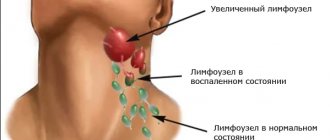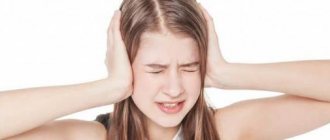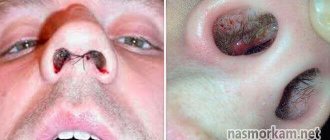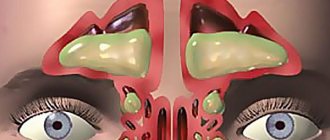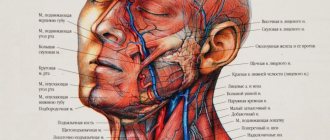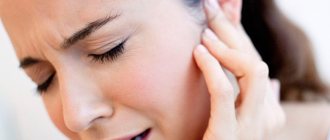Quite often, patients complain that they have a runny nose and ear pain that lasts for a long time. The clinical picture of a cold itself brings unpleasant sensations. The appearance of a cough, runny nose, migraine, pain in the head and ears will not please anyone. A person will feel even worse if a piercing ear pain is added to the cold.
It is especially unpleasant if these symptoms bother a small child. In such situations, it is necessary to know not only about emergency measures to help the sick person, but also about the reasons for the appearance of one or another symptom. Only in this way can one qualitatively help the patient get rid of trouble.
The main causes of headaches radiating to the ear
The main function of diagnostic measures is to identify the causes of pathology. Only after this can you choose a treatment method. Does your head hurt and radiate to your ear? The causes of this symptom may be different:
- All kinds of vascular pathologies.
- Diseases of the nervous system (for example, occipital or trigeminal neuralgia, fatigue, neuroses, depression, nervous exhaustion or other mental imbalances). Often headaches are accompanied by sudden attacks of dizziness, pressure and some congestion in the ears.
- Various head and ear injuries. As a result, headaches radiate to the ear, hematomas appear, possibly foggy consciousness (or complete loss of consciousness), ringing, noise (or other extraneous sounds), and possible vomiting and nausea.
Important! In case of injury, there is a high risk of having a concussion. Therefore, a visit to the doctor is mandatory.
- Migraine, which is characterized by a rather severe pain syndrome that may not spread to the entire head, but only to some part of it. Moreover, the pain can be quite severe and sometimes unbearable.
- Presence of a stroke (or micro-stroke). It is this disease that very often “masks” itself as a local headache and pain in the ears. Don't let your body deceive you! Visual and speech impairment, limited motor ability, as well as numbness of the limbs and tongue may be additional evidence of a stroke.
- All kinds of inflammatory processes in the area of the inner, middle or outer ear (for example, otitis media).
- Pathologies of the spine, or more precisely, in the neck area (for example, osteochondrosis or spondylitis).
- Blockage of the ear canal by accumulations of wax.
- Diseases of the cardiovascular system (for example, tachycardia or angina). These ailments are accompanied by both pain in the heart and spasms of blood vessels in the brain, as well as weakness and nausea.
- Myogelosis.
- Ear diseases of a bacterial or viral nature, which are characterized by pain in the head and tinnitus.
- Brain tumor. In this case, the headache constantly hurts and radiates to the ear. A very serious illness. In addition, flashes flash before your eyes; there is noise and ringing in the ears; some distortion of taste impressions occurs (for example, the patient constantly thinks that the room smells of burnt rubber). If these symptoms occur, you should contact a medical professional as soon as possible.
- Certain disorders in the circulatory system. This condition may be accompanied by headache, tinnitus, loss of balance and fear.
- Inflammatory lesions of the lining of the brain.
On a note! Pain in the head and ears can occur in a completely healthy person. This may be due to increased atmospheric pressure, changes in humidity and changing weather conditions. That is, we mean weather-dependent people.
In any case, the true cause of the headache can only be determined by a doctor who will prescribe the necessary studies and subsequent therapy.
Let's look at some points in more detail.
Ear congestion - what to do?
If a patient has had rhinitis for a long time in a row, then the next symptom that will bother him will be congestion in the ears. This symptom usually appears along with a cold and indicates the onset of pathological inflammation of the ears.
- If your ears suddenly become blocked and hurt, you can use one simple exercise: inhale as deeply as possible, and then exhale powerfully. The mouth should be tightly closed.
- It will be possible to reduce the pressure in the auditory tube if you actively move your jaw. Start moving your lower jaw in such a way as to imitate the process of chewing or yawning.
- If you have ordinary balloons on hand for inflation, you can use this method to get rid of congestion.
Please note that these techniques are not part of the treatment of the disease, however, they can temporarily eliminate discomfort.
Spondylitis
Most often, the cause of this inflammatory disease, in which deformation of the human spine occurs (due to destruction of the vertebral bodies), is a tuberculosis infection. Less commonly, the disease occurs due to diseases such as rheumatoid arthritis, staphylococcus, actinomycosis (that is, a disease from the group of mycoses) or syphilis.
Symptoms of spondylitis:
- The spine and surrounding muscles hurt very much.
- There is a significant decrease in body weight.
- Headaches from the back, especially in the shoulders and neck. Moreover, pain radiates not only to the ears, but also to the eyes.
- Temperature increase.
- Malaise and general weakness.
Congestion and pain after rhinitis
Intense ear pain following recent rhinitis is not uncommon. One of the reasons for this phenomenon is the wax plug formed in the ear. Wax is continuously produced inside our ears, which is normal.
They are needed to perform the protective function of the ear and prevent infection. However, in pathological cases, wax production can increase to such an extent that the ear canal becomes blocked. As a result, the patient feels stuffiness and severe pain in the ear.
Osteochondrosis
This is a disease that is characterized by a whole complex of dystrophic disorders in articular cartilage; most often it develops in the area of intervertebral discs. What is the mechanism of the disease? As a result of some anomalies in the structure of the pelvis, curvature of the spine, a weakened immune system, back injuries, metabolic disorders, pathological disorders of the cardiovascular system, heredity and gastrointestinal diseases, disc wear occurs. During this inflammatory process, the patient experiences severe suffering. Next, some compression of the spine occurs, as a result of which the discs (which have already lost their elasticity) are crushed, and the nerve endings of the spinal cord are pinched.
Symptoms of the disease:
- A person feels stiffness in movements (especially in the morning after getting out of bed).
- The patient complains that the headache radiates to the ear (right or left).
- Some loss of coordination of movements.
- The presence of fainting, periodically recurring.
- There is numbness in the fingertips.
- Vision deteriorates.
- Presence of noise and ringing in the ears.
- Frequent dizziness.
- Nauseous condition.
- At first, rarely, and then more and more often appearing piercing, sharp pains in the lumbar region, sternum and neck. Moreover, pain can radiate to the heart, arm, leg or shoulder blade.
- Pallor of the skin is observed.
- The presence of a characteristic crunching sound in the vertebral area during bending, turning and any other movement.
Important! If the disease is not treated, its development can lead to inevitable disability.
Signs of the disease are directly dependent on the stage of the pathology: the first is a relatively calm and painless period; As the disease develops in the second, third and fourth stages, the pain begins to increase and cause the patient a lot of problems. Remember: at the first symptoms you should contact a medical facility for help.
On a note! If previously osteochondrosis mainly affected people over the age of 45, today this disease has become much younger. People under 30 years of age (their number is about 25-30% of all patients with this disease) may experience the symptoms described above and complain of problems with the spine.
What to do if your ear hurts
Based on the test results, the doctor draws up a treatment regimen, which includes medication and manual therapy, massage, physical therapy, and physiotherapy.
Treatment with drugs
Often a person may experience pain on the right or left side; in this situation, there is no need to immediately take medications and relieve the pain; first you need to find out the reason for its occurrence. If it recurs frequently, you need to consult with your doctor and be additionally examined by a neurologist, ophthalmologist, or ENT specialist.
Only after an accurate diagnosis, it will be possible to take measures regarding treatment and relief from pain.
Pain on the right side due to migraine
Most often, with a migraine, pain is localized on the right, and radiates to the eyes and temple. Before a headache, a person experiences spots flashing before his eyes, then he is irritated by light, and problems with coordination of movements may appear. Hearing and smell are also impaired.
Heart attacks and strokes are the cause of almost 70% of all deaths in the world. Seven out of ten people die due to blockages in the arteries of the heart or brain. And the very first and main sign of vascular blockage is a headache!
Particularly scary is the fact that the mass of people do not even suspect that they have a disorder in the vascular system of the brain and heart. People take painkillers - a pill for the head, thereby missing the opportunity to fix something, simply dooming themselves to death.
Blockage of blood vessels results in a disease under the well-known name “hypertension”, here are just some of its symptoms:
- Headache
- Increased heart rate
- Black dots before the eyes (floaters)
- Apathy, irritability, drowsiness
- Blurred vision
- Sweating
- Chronic fatigue
- Swelling of the face
- Numbness and chills in fingers
- Pressure surges
Avoid quick fixes for ear pain. If you choose the wrong treatment, you can completely lose your hearing. It is important to act according to your doctor's advice.
The following tips will be useful at home:
- Protect your ears from moisture.
- If there is an infection, place a small piece of cotton swab into the ear canal.
- If the pain is unbearable, a painkiller like ketonal will do; you should not abuse them, as there is a risk of causing paralysis of the nerve roots of the face.
- Warming the ear canal should only be done at normal body temperature.
There is no person who has not experienced a headache at least once. Headaches in the temple area cause particular suffering. However, few people know that this seemingly common ailment is sometimes a symptom of serious illnesses. Today we will figure out what headaches in the temples and ears mean.
Causes of pain in the temples and ear area
One of the popular causes of pain in the right or left temple and ear is poor circulation. This may be due to pathologies of venous or arterial vessels as a result of deterioration of wall tone.
People in adulthood often experience pain on the left side of the ear and temple when atmospheric pressure and weather conditions in general change. This may be due to atherosclerosis, and stress and high brain activity can aggravate the situation.
Localization of pain in the left temple and ear in some cases is a consequence of inflammation of the inner ear. It is not at all difficult to diagnose otitis media yourself: press on the auricle where it protrudes at the external opening of the auditory canal. When the pain increases, it's actually inflammation. Additional symptoms that can confirm the diagnosis include:
- increase in body temperature;
- purulent discharge, etc.
The pathology sometimes manifests itself as a complication of a viral or cold disease, but can occur separately.
Ear diseases
If a person complains that he has pain in the back of his head and radiates into the ear, then it can be anything: from widespread otitis media to a ruptured eardrum and Meniere’s disease (that is, a disease of the inner ear of a non-purulent nature).
In addition, ear congestion and dizziness can occur due to:
- disturbances in the functioning of the human vestibular apparatus;
- injuries;
- tumors (malignant or benign);
- hereditary predisposition;
- infections.
Causes of headaches and ear congestion
The middle ear is a cavity filled with air. In order for us to hear, a certain pressure is created inside, which depends on the atmospheric pressure. As soon as it changes, a feeling of stuffiness in the ears occurs.
The causes of ear congestion accompanied by headaches are:
- Sudden change in atmospheric pressure . This happens during takeoff or landing of an airplane, diving to depths. In this case, slight dizziness, headache, and hearing loss are short-lived and do not indicate pathology.
- Stuffy nose. Air enters the middle ear and Eustachian tube during inhalation. When you have a runny nose, the pressure inside the tympanic cavity decreases, and the membrane is pressed in, the pressure of the intralabyrinthine fluid increases, and hearing decreases. Migraine, a feeling of heaviness in the head, pounding in the temples occur due to hypoxia, intoxication and are not associated with hearing impairment.
- Increased intracranial pressure . Due to poor circulation, the ears become blocked and there is pressure on the head. Often this condition is accompanied by the appearance of black spots before the eyes. This is a very alarming symptom, indicating the presence of pathology.
With headaches accompanied by hearing impairment, patients often turn to an otolaryngologist, neurologist or cardiologist. This is due to the fact that the range of diseases that occur with such symptoms is very wide. These may be pathologies:
- sound conducting apparatus;
- sound-receiving apparatus;
- cardiovascular;
- central nervous system.
Headache and hearing loss may be symptoms independent of each other . For example, the ear is clogged with wax, a foreign body that got in with water after swimming, and the head hurts due to fatigue and stress. In any case, it is necessary to pay attention to these signs, as they indicate the presence of pathology.
Only a consultation with a doctor will help determine the exact cause of the headache and stuffy ears.
Otitis
This inflammatory process in the ear (usually observed in the middle part of the organ) is more common in children than in adults. What can cause otitis media? These are mainly ARVI (that is, acute respiratory viral infections).
On a note! Quite often, athletes, namely swimmers, are susceptible to otitis media.
Symptoms of the disease:
- Pain in the back of the head, which either decreases or increases significantly.
- The inside of the ear hurts and radiates to the head.
- Presence of dizziness.
- Sometimes purulent discharge from the ear is observed.
- There may be swelling.
- High body temperature.
Important! As a rule, with this disease the headache is localized on the side of the otitis media.
Medicines for ear pain
It would be worth mentioning that any prescriptions for ear pain should only be made by a specialist. This is especially true for situations where the ear begins to hurt after a runny nose or inflammation of the pharyngeal tonsils.
If it is not possible to see a doctor, and the intensity of the pain increases, you can use drops from the pharmacy.
Otinum
If an adult or a child has an earache, then you can often find this drug on the prescription list. It is prescribed to eliminate complications after viral infections, pharyngitis or influenza.
The main active component of the drug is choline salicylate. It has a pronounced anesthetic and anti-inflammatory effect. Instillations are carried out according to the scheme of 3 drops with an interval of 5 hours.
The course of treatment with Otinum ear drops ranges from 7 to 10 days. If there is no improvement during this period, you should consult a doctor to change the drug.
Otipax
These drops are used for almost any ear ailment in which the patient’s ear is blocked or hurts. Even with advanced forms of otitis, the drug is able to make the patient feel relief.
The medicine contains antibacterial components. It disinfects the affected mucous membranes, stops the inflammatory process, and relieves the patient from pain.
The undoubted advantage of this drug is the absence of contraindications. The drops are approved for use even by newborn children, because they do not provoke allergic reactions. It is necessary to instill 5 drops 2 times a day.
Sofradex
This medication can be found on pharmacy shelves in the form of ear drops or ointment. It is prescribed to patients who have ear pain in order to neutralize dangerous bacteria and eliminate pain inside the ear.
The medicine has many contraindications, which is why it is not recommended to use it without consulting a doctor. The duration of treatment with the drug cannot exceed one week.
If a pregnant woman or child begins to have ear pain, it is better not to use Sofradex as a method of self-medication. Give preference to safer medications or alternative medicine recipes.
Vascular pathologies
The patient complains of a headache that radiates into the ear. It is quite possible that this is a symptom of one of the ailments of the group of vascular diseases (for example, vegetative-vascular dystonia, hypotension, hypertension, atherosclerosis and others).
Important! Don't let symptoms like ear or head pain go unnoticed. It is worth going to see a doctor for advice. Take more care of your health, because you can’t buy it for any amount of money (a truism, but nevertheless, it’s true).
Increased blood pressure
With high blood pressure (that is, hypertension), patients experience:
- Frequent dizziness.
- Flashing of flies before the eyes.
- Ear congestion.
- Malaise and weakness.
- Severe pain in the back of the head, which is characterized by pressing and pulsating nature.
- Sharp redness of the face.
- Cardiopalmus.
- Dyspnea.
- With significant blood pressure levels, extraneous noise and ringing in the ears, as well as hearing loss, may be observed.
Atherosclerosis
Another dangerous ailment of the group of diseases, a characteristic feature of which is vascular spasm, is atherosclerosis. The main symptom of this disease is the presence of monotonous and repetitive sounds in the ears in the form of “tickling, clanking and chirping of grasshoppers.” They exhaust the sick person.
Atherosclerosis, as a rule, appears as a result of a violation of the metabolic processes of lipids (they belong to the group of organic compounds, including fat-like substances and fats), resulting in the deposition of cholesterol (moreover, “bad” cholesterol, since in nature there is also "good") on the walls of blood vessels. Possible causes of this disease:
- “Sedentary” or “lying down” lifestyle (that is, physical inactivity).
- Exorbitantly high consumption of animal fats.
- Hormonal imbalance.
- Slowing down the metabolic process.
- Poor functioning of the intestines in terms of removing fat-like substances from the human body.
- Significant increase in body weight.
- Disturbances in the functioning of the central nervous system (CNS).
- Having a bad habit such as smoking.
- High blood pressure, which increases the permeability of the vascular walls.
- The presence in the patient’s life of a large number of stressful situations, as well as psycho-emotional stress.
- Hereditary predisposition.
- Presence of diabetes mellitus.
High weather sensitivity
Headache can also occur in people who are weather dependent and also have rather weak blood vessels. Moreover, the disease manifests itself as follows: approximately 1.5-2 hours before a change in weather conditions (that is, the appearance of strong winds, blizzards, thunderstorms, precipitation in the form of rain or snow), a person begins to experience a clear deterioration in general well-being, which is accompanied by pain in the head, weakness and tinnitus. After some time has passed after the weather has changed, the symptoms of the disease begin to subside and the patient begins to feel better.
On a note! As a rule, in this case the disease begins suddenly, and it ends in the same way.
